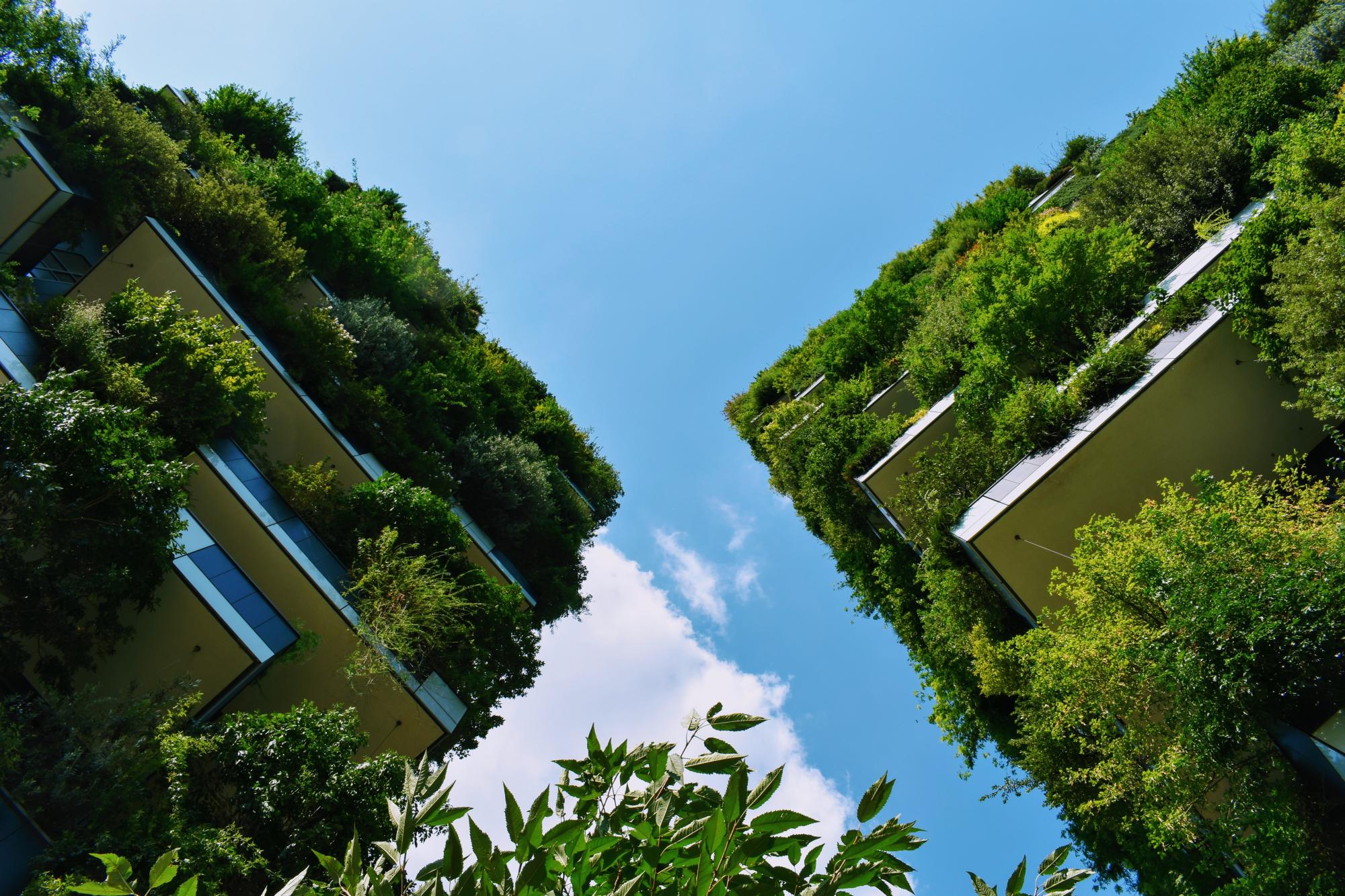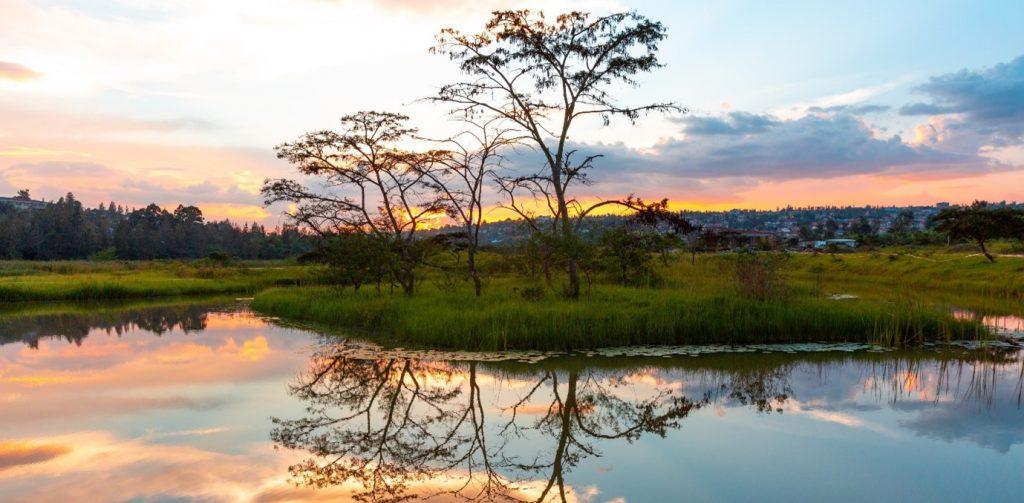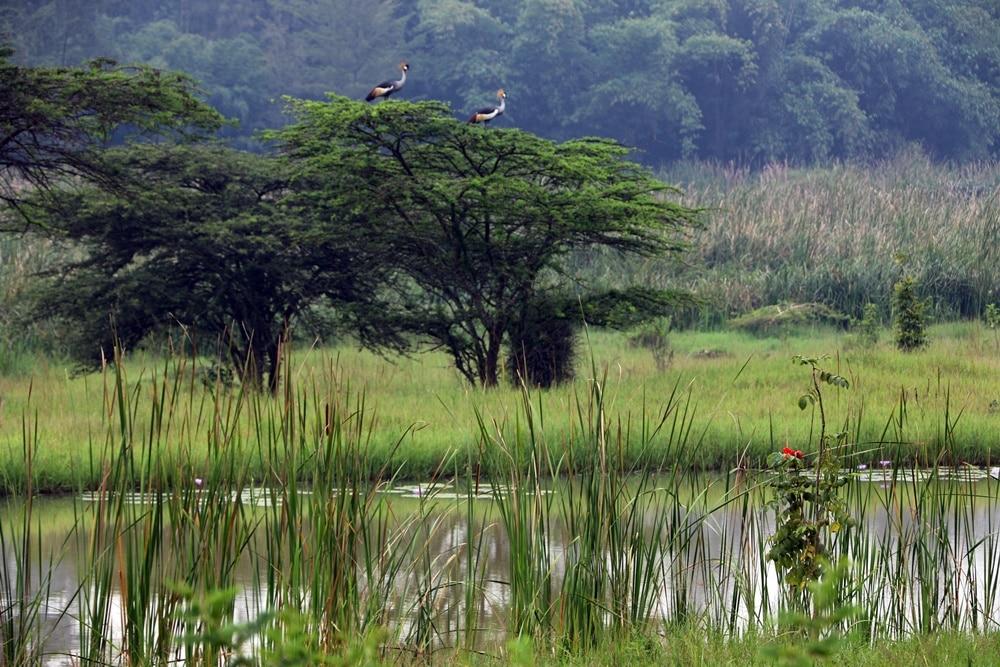The creation of Nyandungu Wetland Eco-Tourism Park is part of Rwanda’s efforts to restore and conserve ecosystems while promoting social-economic development. The Rwandese capital, Kigali, experiences regular flooding during rainstorms, due to the runoff from the surrounding urbanized hills, with the stormwater concentrating at the valley bottom in former wetlands. These floods cause disruption to traffic, preventing all travel between hillside communities. In order to address stringent issues, the focus turned on the wetlands surrounding the capital of the country. One of these wetlands is the Nyandungu wetland, which has suffered a lot of land use changes over the years, including agricultural activities, pasturing, cattle farms, sand mining, and wetland reclamation. From a climate change point of view, the project aims to address problems related with flooding and sustained base-flows in rivers. From a biodiversity point of view, the project aims to enhance biodiversity conservation. The main goal is the reconstruction of the Nyandungu Wetland Eco-Park with green infrastructure and services strategies for green energy, saving and recycling water, use of local and natural materials as well as architectural designs that maximize natural lighting and ventilation. (1,4)
Overview
Nature-based solution
- Blue infrastructure
- Rivers/streams/canals/estuaries
- In-land wetlands, peatlands, swamps, and moors
Key challenges
- Climate action for adaptation, resilience and mitigation (SDG 13)
- Climate change mitigation
- Green space, habitats and biodiversity (SDG 15)
- Habitat and biodiversity conservation
- Green space creation and/or management
- Water management (SDG 6)
- Flood protection
- Stormwater and rainfall management and storage
- Improvements to water quality
- Cultural heritage and cultural diversity
- Preservation of natural heritage
Focus
Project objectives
Implementation activities
Climate-focused activities
Climate change mitigation:
- Increase green urban nature for carbon storage (wetlands, tree cover)
- Improve carbon sequestration through selection of more adaptable species
- Raise public awareness of behaviours, lifestyle and cultural changes with mitigation potential
Biodiversity conservation or restoration-focused activities
Biodiversity conservation:
- Protect and enhance urban habitats
- Preserve and strengthen existing habitats and ecosystems
- Protect species
- Undertake specific measures to protect species
- Undertake specific measures to protect native species
- Means for conservation governance
- Raise public awareness
- Public engagement
- Capacity building
Main beneficiaries
- Local government/Municipality
- Non-government organisation/Civil Society
- Citizens or community groups
- Young people and children
Governance
Management set-up
- Co-governance with government and non-government actors
Type of initiating organisation
- National government
- Local government/municipality
Participatory approaches/ community involvement
- Dissemination of information and education
- Joint implementation (e.g. tree planting)
Details on the roles of the organisations involved in the project
Project implemented in response to ...
Financing
Total cost
Source(s) of funding
- Other
Type of funding
- Direct funding (grants, subsidies, or self-financed projects by private entities)
Non-financial contribution
- Provision of land
- Provision of labour
- Provision of expertise
- Public authorities (e.g. land, utility services)
- Citizens (e.g. volunteering)
Impacts and Monitoring
Environmental impacts
- Green space and habitat
- Increased green space area
- Reduced biodiversity loss
- Increased number of species present
Economic impacts
- Increase of green jobs (e.g. paid employment positions)
Socio-cultural impacts
- Education
- Increased knowledge of locals about local nature
- Safety
- Increased perception of safety
- Decreased crime rates
Type of reported impacts
Presence of formal monitoring system
Presence of indicators used in reporting
Presence of monitoring/ evaluation reports
Availability of a web-based monitoring tool
References
2. GGGI (2022), NYANDUNGU WETLAND ECO-PARK report, available at Source link (accessed 21-03-2022)
3. Government of Rwanda (2020), NYANDUNGU URBAN WETLAND ECO-TOURISM PARK PROJECT TO BE LAUNCHED IN 2021, available at Source link (accessed 21-03-2022)
4. WWF (no date), WATERWAYS TO RESILIENCE. NATURE-BASED SOLUTIONS FOR ADAPTATION IN AFRICA available at Source link (accessed 21-03-2022)
5. Municiplaity of Kigali, Kigali Master Plan 2050, available at Source link (accessed 21-03-2022)
6. Asprod Studio (2019), Nyandungu Urban Wetland Eco Tourism Park Documentary Film, available at Source link (accessed 21-03-2022)
7. Top Africa News (2021), Nyandungu Urban Wetland Eco-Tourism Park where IFAK students visited to discover scientific facts connecting the classroom experience with real-life and authentic experience, available at Source link (accessed 21-03-2022)




